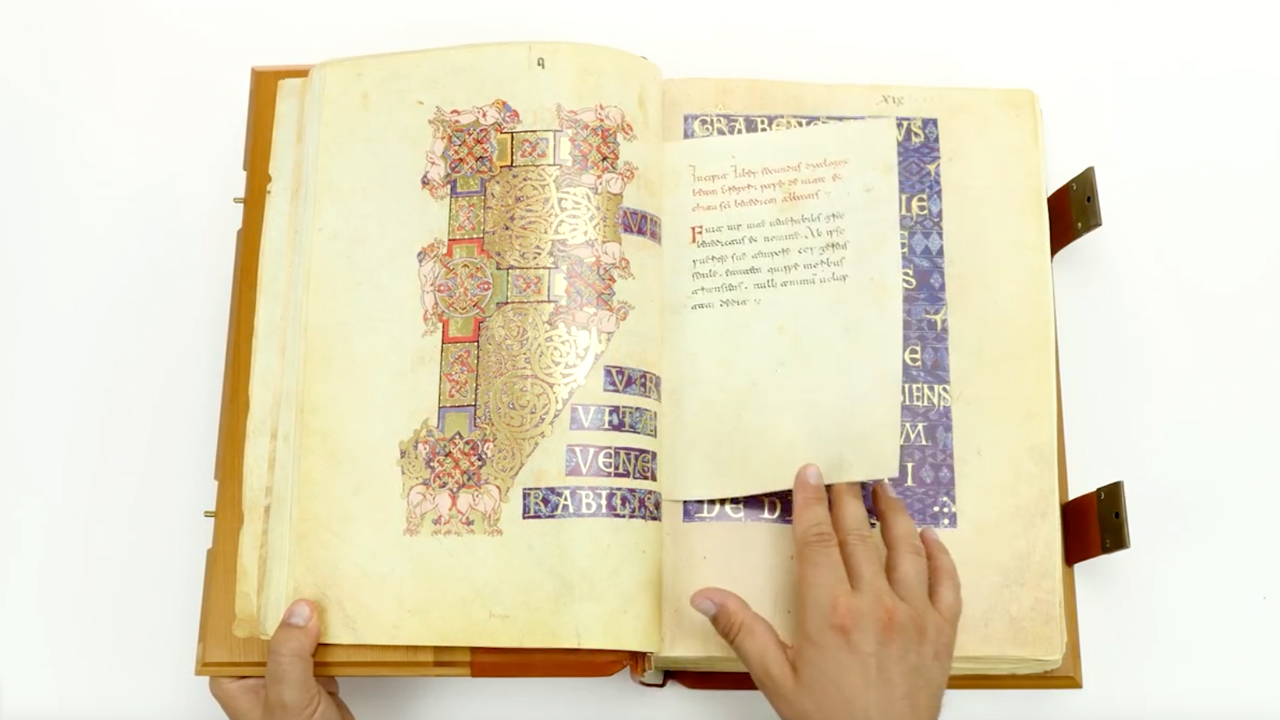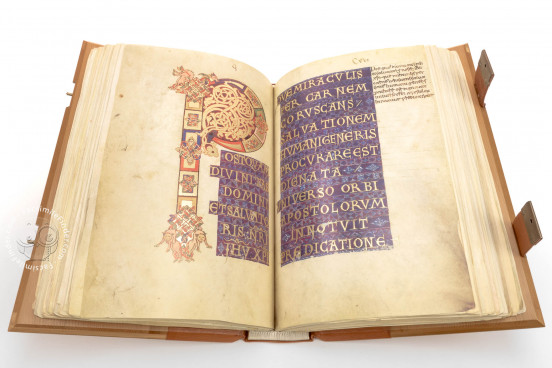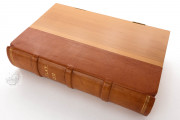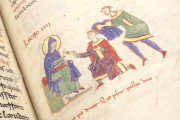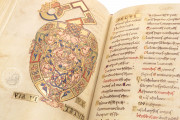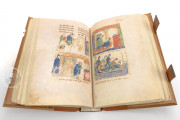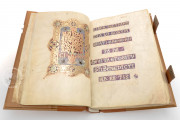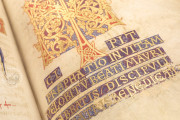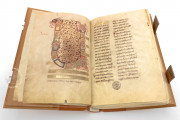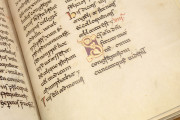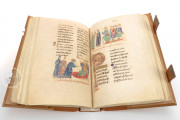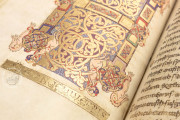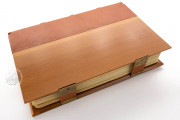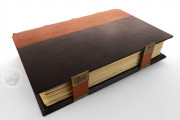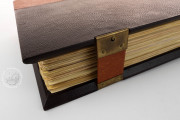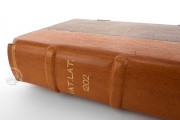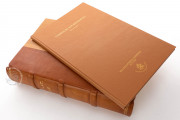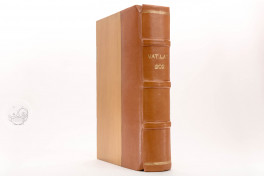The Codex Benedictus, also known as the Cassinese Lectionary, is an impressive example of a vitae, or Saints’ Lives, in both size and content. It was made in Montecassino in the Benevento region of Southern Italy around 1071. The manuscript describes the life of Saint Benedict — the founding saint of Montecassino abbey — whose relics reputedly still reside in the church there. It also describes the lives of his twin sister, Saint Scholastica, and his first oblate, Saint Maur.
The manuscript reveals a great deal about the milieu in which it was made and informs on the working practices of the artists during this time. It is among the larger of the extant vitae, being 37 cm x 25 cm, and its 262 parchment folios are in generally excellent condition.
Born in Nursia, Italy, Benedict, who died around 560, is an important figure in the development of Christian religious practices. While at the community of Montecassino, he established a set of rules for both monks and laymen, which were to shape Western monasticism for centuries and which are still observed in some monasteries today.
The Codex Benedictus was made during a period of great artistic endeavor under the abbacy of Desiderius (1058–1087). Intent on repairing the crumbling abbey, he also commissioned many works of art including mosaics, wall paintings, and lavishly illuminated manuscripts. Considered one of the most important of the illuminated manuscripts made at Montecassino, it not only features the life of their founding saint, but is also one of the few remaining examples of artistic works from Montecassino of this period.
The parchment used is of the highest quality, and a wide range of pigments are employed on the extensive pictorial programs of the saints’ lives. Gold is used throughout but is particularly employed to decorate the ornate, full-page initials, all of which attest to this lectionary as an exceptionally luxurious object.
Evidence of Ottonian and Byzantine Styles
The manuscript has an unusually large number of depictions for a vitae: sixty-five multi-scene miniatures for Benedict and twenty-nine for Maur. The depictions reflect the increasing impact of Byzantine images in the West. The full-page initials are derived from and interpret earlier traditions using gold, vibrant colors, and animals, to enliven the interlaced forms (fols. 3v, 53r, 72v).
With its wealth of images for the separate cycles of Benedict and Maur, the Codex Benedictus is clearly the work of several artists. These artists not only employ different techniques but also have different skill levels, as evidenced in some images by unsatisfactory drapery, badly-proportioned heads, and poorly-detailed facial features. Some depictions also show evidence of highly-skilled execution with minor involvement by a lesser-skilled artist.
The artists employed a model as the basis for the depictions which may have emanated from Rome. One indicator of such a source are two tenth-century frescos found in the church of St. Crisogono in Rome which are replicated almost identically on fols. 31r and 61r. Other depictions may reflect an earlier model, but unique details demonstrate the artists adapted and included their own innovative style.
Some initials are closely allied to those found in Ottonian manuscripts, but the artists improved the style to create their own versions (fols. 18v, 87v). Large initials and small capitals employ red dots to decorate the shapes. Terminals and mid-sections are accented by large interlace knots, in some cases including beaked monsters and dogs (fols. 3v, 53r, 72v, 259v).
An Enduring Script
Written in Beneventan minuscule, the text shows no evidence of haste in the clear, precise rendition of the letters. This is indicative of the desire to produce an item of quality, where rushed letter forms might indicate pressure to complete, for whatever reason. The scribe is thought to be the monk, Leone, also possibly responsible for Codex Casinensis 99 and the Exultet Scroll, Vat. Lat. 3784.
Historians named the script after the Benevento region in which it flourished in southern Italy. Early versions of the style date from the late eighth century, and it evolved and remained in use until the end of the thirteenth. Among other identifiable traits, it is characterized by an extensive use of ligatures, giving the text a particularly pleasing visual appearance.
The apogee of the style is considered to be during Desiderius’ abbacy. The letter forms during this period demonstrate a regularity and precision which contributes to the overall appearance of the script and is evident in the Codex Benedictus.
A Lavish Liturgical Manuscript
Produced during the abbacy of Desiderius (1058–87) while undertaking the reconstruction of Montecassino abbey, the manuscript was intended for liturgical use on the abbey’s important feast days of Saints Benedict, Scholastica, and Maur.
The abbey’s inventory indicates it was located there during the papacy of Paul II (1464-1471). Subsequently, the inventory of around 1475 lists it in the Vatican Library collection.
We have 2 facsimiles of the manuscript "Codex Benedictus":
- Codex Benedictus (Pope Edition) facsimile edition published by Belser Verlag, 1981
- Codex Benedictus (Standard Edition) facsimile edition published by Belser Verlag, 1981

